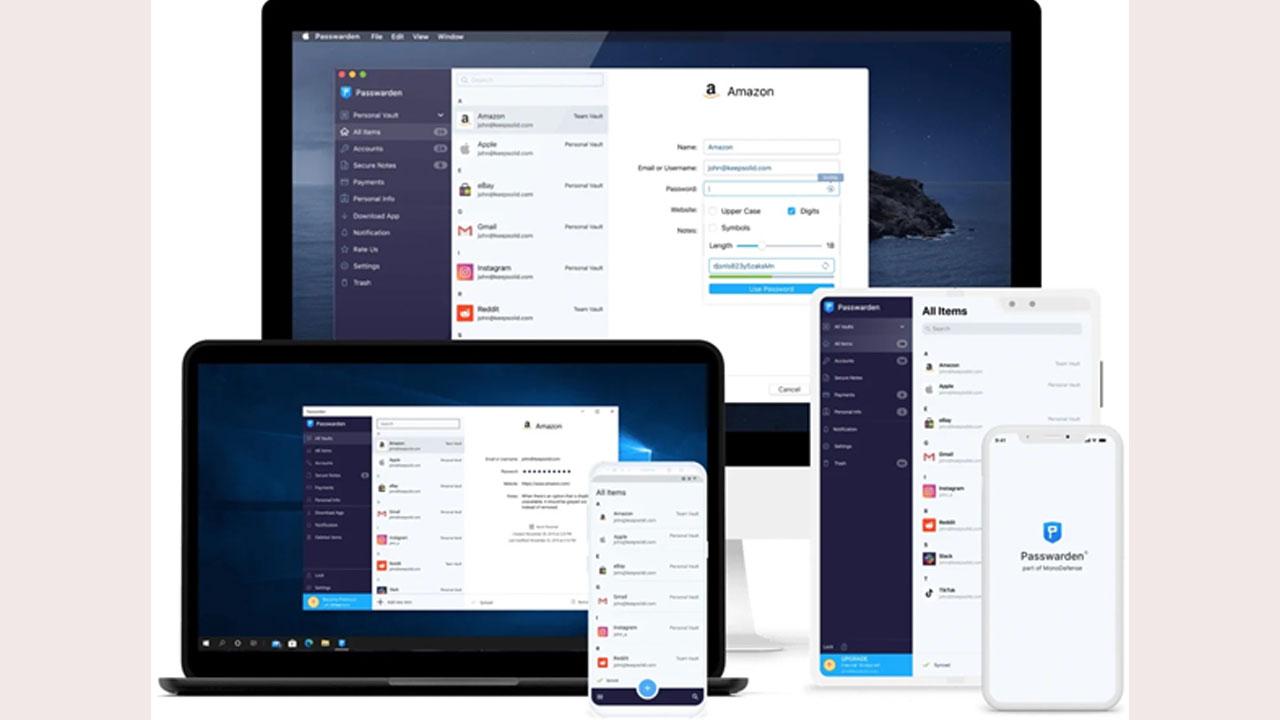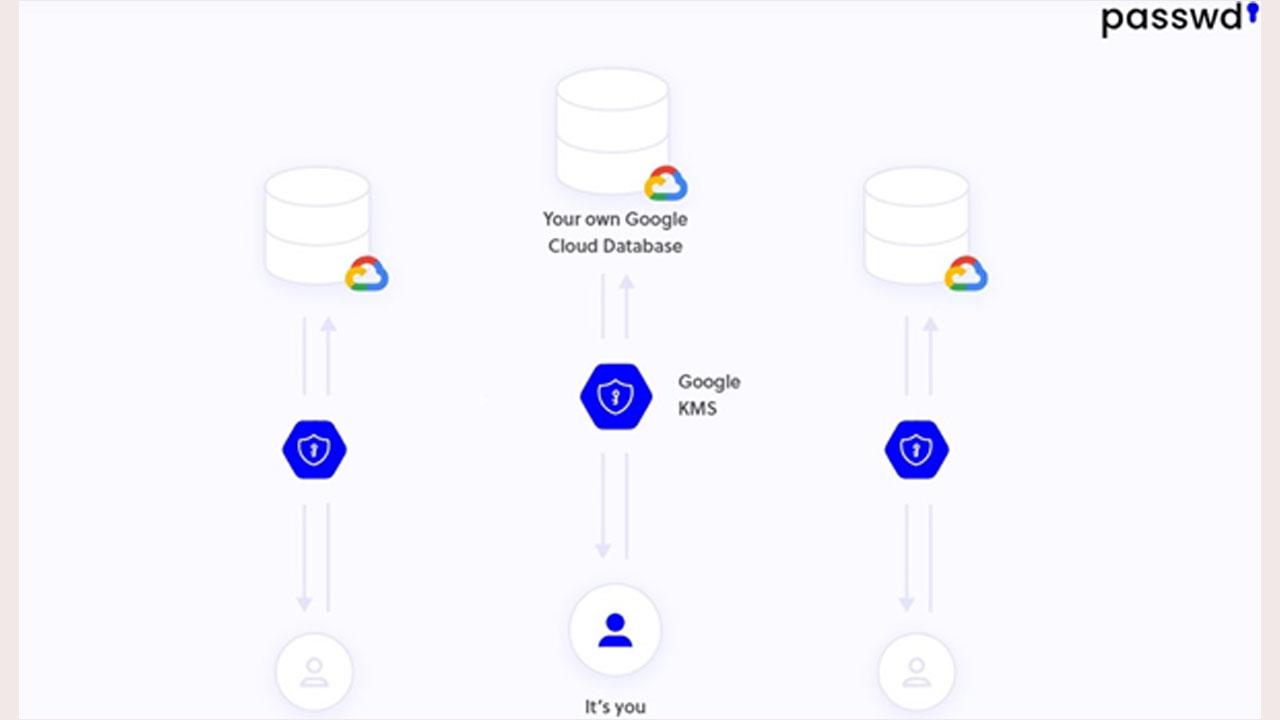Shared password vaults for teams with free and premium options - access to your passwords wherever you go, avoid creating duplicate or conflicting passwords.

Top 10 Password Managers for Teams in 2024
If you work in a team, you know how important it is to keep your passwords secure and organized. A team password manager can help you:
ADVERTISEMENT
- Create strong and unique passwords for each account and website
- Access your passwords from any device and browser
- Share passwords with your team members securely and easily
- Control who can access, edit, or revoke passwords
- Audit password usage and activity
- Generate reports and alerts
- Sync passwords with other password managers or apps
But how do you choose the best team password manager for your needs? There are many options available, each with its own features, benefits, and drawbacks. To help you decide, we have reviewed the top 10 team password managers, both free and paid. We have compared them based on the following criteria:
- Platforms supported: the devices and browsers that the password manager works on
- Import/export: the ability to import or export passwords from browsers or other password managers
- 2FA: the availability of two-factor authentication for extra security
- Filling web forms: the ability to autofill web forms with your personal or payment information
- Secure sharing: the ability to share passwords with your team members in a secure way
- Offline storage: the ability to store passwords locally on your device
- Price: the cost of the password manager, either free or paid
Top Tested Picks: Editor’s choice
1. Passwarden

Passwarden is our top choice for the best team password manager in 2024. It is a powerful and user-friendly tool that offers everything you need to manage your passwords with your team. It has the following features:
- Supports Windows, Mac, Linux, iOS, Android, Chrome, Firefox, Edge, Opera, and Safari (also available as a mobile app for ios and android)
- Imports and exports passwords from browsers and other password managers
- Supports 2FA with SMS, email, or authenticator apps
- Fills web forms with your personal or payment information
- Shares passwords securely with your team members, with granular permissions and roles
- Stores passwords offline on your device, with AES-256 encryption
- Offers a fair and flexible pricing plan, starting from $3.33 per user per month
The only minor drawback of Passwarden is that only 7 seats are available per one “team plan”.
2. TeamPasswordManager
TeamPasswordManager is another great option for team password management. It is a web-based tool that lets you store and share passwords with your team in a centralized and secure way. It has the following features:
- Supports any device and browser that can access the web
- Imports and exports passwords from CSV files
- Supports 2FA with email or authenticator apps
- Does not fill web forms, but has a browser extension that autofills passwords
- Shares passwords securely with your team members, with granular permissions and roles
- Stores passwords online on their servers, with AES-256 encryption
- Offers a reasonable and transparent pricing plan, starting from $29 per month for 10 users
The main drawback of TeamPasswordManager is that it does not have a mobile app, so you need to access it through the web browser on your phone.
3. TeamPassword

TeamPassword is a simple and elegant tool that helps you manage your passwords with your team. It has the following features:
- Supports Windows, Mac, iOS, Android, Chrome, Firefox, and Safari
- Imports and exports passwords from browsers and other password managers
- Supports 2FA with email or authenticator apps
- Fills web forms with your personal or payment information
- Shares passwords securely with your team members, with granular permissions and roles
- Stores passwords online on their servers, with AES-256 encryption
- Offers a competitive and flexible pricing plan, starting from $15 per month for 5 users
The only minor drawback of TeamPassword is that it does not have a native app for Linux, but you can use the browser extension instead.
4. Passbolt
Passbolt is a unique and open-source tool that lets you manage your passwords with your team in a transparent and collaborative way. It has the following features:
- Supports Windows, Mac, Linux, Chrome, Firefox, and Edge
- Imports and exports passwords from browsers and other password managers
- Supports 2FA with email or authenticator apps
- Does not fill web forms, but has a browser extension that autofills passwords
- Shares passwords securely with your team members, with granular permissions and roles
- Stores passwords online on their servers, with AES-256 encryption
- Offers a free and a paid version, starting from $60 per year for 5 users
The main drawback of Passbolt is that it does not have a mobile app, so you need to access it through the web browser on your phone.
5. Passwd

Passwd is a modern and minimalist tool that helps you manage your passwords with your team in a sleek and intuitive way. It has the following features:
- Supports Windows, Mac, Linux, iOS, Android, Chrome, Firefox, and Safari
- Imports and exports passwords from browsers and other password managers
- Supports 2FA with email or authenticator apps
- Fills web forms with your personal or payment information
- Shares passwords securely with your team members, with granular permissions and roles
- Stores passwords online on their servers, with AES-256 encryption
- Offers a free and a paid version, starting from $3 per user per month
The only minor drawback of Passwd is that it does not have a native app for Linux, but you can use the browser extension instead.
6. Drive Password
Drive Password is a smart and innovative tool that lets you manage your passwords with your team using your Google Drive account. It has the following features:
- Supports Windows, Mac, Linux, iOS, Android, Chrome, Firefox, and Safari
- Imports and exports passwords from browsers and other password managers
- Supports 2FA with SMS, email, or authenticator apps
- Fills web forms with your personal or payment information
- Shares passwords securely with your team members, using Google Drive’s sharing features
- Stores passwords offline on your device, with AES-256 encryption
- Offers a free and a paid version, starting from $1.99 per user per month
The main benefit of Drive Password is that it leverages your existing Google Drive account, so you don’t need to create a new account or pay for extra storage. The main drawback is that it depends on your Google Drive account, so if you lose access to it, you lose access to your passwords.
7. Hypervault
Hypervault is a fast and reliable tool that helps you manage your passwords with your team in a secure and efficient way. It has the following features:
- Supports Windows, Mac, Linux, iOS, Android, Chrome, Firefox, and Safari
- Imports and exports passwords from browsers and other password managers
- Supports 2FA with email or authenticator apps
- Fills web forms with your personal or payment information
- Shares passwords securely with your team members, with granular permissions and roles
- Stores passwords online on their servers, with AES-256 encryption
- Offers a free and a paid version, starting from $4.99 per user per month
The only minor drawback of Hypervault is that it does not have a native app for Linux, but you can use the browser extension instead.
8. Team Password Manager
Team Password Manager is a simple and free tool that lets you manage your passwords with your team using your Chrome browser. It has the following features:
- Supports Chrome only
- Imports and exports passwords from Chrome only
- Does not support 2FA
- Does not fill web forms, but has a browser extension that autofills passwords
- Shares passwords securely with your team members, using Chrome’s sync feature
- Stores passwords offline on your device, with AES-256 encryption
- Offers a free version only
The main benefit of Team Password Manager is that it is free and easy to use, as it integrates with your Chrome browser. The main drawback is that it is limited to Chrome only, so you cannot access your passwords from other devices or browsers.
9. Teampass
Teampass is a robust and flexible tool that lets you manage your passwords with your team in a customizable and scalable way. It has the following features:
- Supports any device and browser that can access the web
- Imports and exports passwords from CSV files
- Supports 2FA with email or authenticator apps
- Does not fill web forms, but has a browser extension that autofills passwords
- Shares passwords securely with your team members, with granular permissions and roles
- Stores passwords online on their servers, with AES-256 encryption
- Offers a free and a paid version, starting from $60 per year for 10 users
The main benefit of Teampass is that it is free and open-source, so you can customize it to your needs and preferences. The main drawback is that it requires some technical skills to install and configure it on your own server.
10. Psono
Psono is a secure and easy-to-use tool that helps you manage your passwords with your team in a hassle-free way. It has the following features:
- Supports Windows, Mac, Linux, iOS, Android, Chrome, Firefox, and Safari
- Imports and exports passwords from browsers and other password managers
- Supports 2FA with email or authenticator apps
- Fills web forms with your personal or payment information
- Shares passwords securely with your team members, with granular permissions and roles
- Stores passwords online on their servers, with AES-256 encryption
- Offers a free and a paid version, starting from $2 per user per month
The only minor drawback of Psono is that it does not have a native app for Linux, but you can use the browser extension instead.
Syncing passwords with other devices, browsers, and apps
One of the challenges of using a team password manager is to sync your passwords with other devices, browsers, and apps that you or your team members use. You want to have access to your passwords wherever you go, and you want to avoid creating duplicate or conflicting passwords.
Different team password managers have “their own” ways of syncing passwords with other devices, browsers, and apps. Some of the common methods are:
- Browser extensions: these are add-ons that you install on your browser, such as Chrome, Firefox, or Safari, that allow you to access, autofill, and manage your passwords from your browser. Most team password managers offer browser extensions, but some may not support all browsers or platforms.
- Mobile apps: these are applications that you install on your mobile device, such as iPhone, Android, or iPad, that allow you to access, autofill, and manage your passwords from your phone or tablet. Most team password managers offer mobile apps, but some may not support all devices or platforms.
- Desktop apps: these are applications that you install on your computer, such as Windows, Mac, or Linux, that allow you to access, autofill, and manage your passwords from your desktop or laptop. Some team password managers offer desktop apps, but some may not support all platforms or have limited features.
- Web apps: these are websites that you access from any device or browser, that allow you to access, autofill, and manage your passwords from the web. Some team password managers are web-based only, while others offer web apps as an alternative or backup option.
- Cloud sync: this is a feature that allows you to sync your passwords across different devices, browsers, and apps, using a cloud service, such as Google Drive, Dropbox, or iCloud. Some team password managers use cloud sync as their main or only method of syncing passwords, while others offer it as an optional or additional feature.
The best method of syncing passwords depends on your preferences, needs, and security concerns. Some of the factors that you may want to consider are:
- Convenience: how easy and fast is it to access and use your passwords from different devices, browsers, and apps?
- Compatibility: how well does the password manager work with different devices, browsers, and apps that you or your team members use?
- Security: how safe and encrypted are your passwords when they are synced across different devices, browsers, and apps?
- Control: how much control do you have over your passwords when they are synced across different devices, browsers, and apps?
- Cost: how much does the password manager charge for syncing passwords across different devices, browsers, and apps?
FAQ:
Q) Does Microsoft teams have a password manager?
Microsoft Teams does not have a built-in password manager, but it does have an integration with a third-party password manager called LogMeOnce. LogMeOnce is a team password manager that lets you store, manage, and share passwords with your team members in a secure and convenient way.
To use LogMeOnce with Microsoft Teams, you need to install the LogMeOnce app from the Microsoft AppSource, and then sign in with your LogMeOnce account.
Q) How do you manage team passwords?
Managing team passwords can be challenging, but it can also be rewarding if you do it right. Here are some tips on how to manage team passwords effectively:
- Use a team password manager: such as Passwarden, Team Password Manager, or Psono.
- Follow the best practices: using a team password manager is not enough, try to:
- Create strong and unique passwords for each account and website.
- Change your passwords regularly.
- Use 2FA (two-factor authentication).
- Don’t reuse or share passwords.
- Don’t write down or store passwords insecurely.
Q) Does Office 365 have a password manager?
Office 365 does not have a built-in password manager, but it does have a feature called Microsoft Authenticator, which is a mobile app that lets you sign in to your Office 365 account and other Microsoft services without a password. It can help you:
- Access your Office 365 account and other Microsoft services without a password
- Protect your account from unauthorized access, even if your password is compromised or stolen
- Manage your account settings and security options
- Sync your account across different devices and browsers
 Subscribe today by clicking the link and stay updated with the latest news!" Click here!
Subscribe today by clicking the link and stay updated with the latest news!" Click here!







